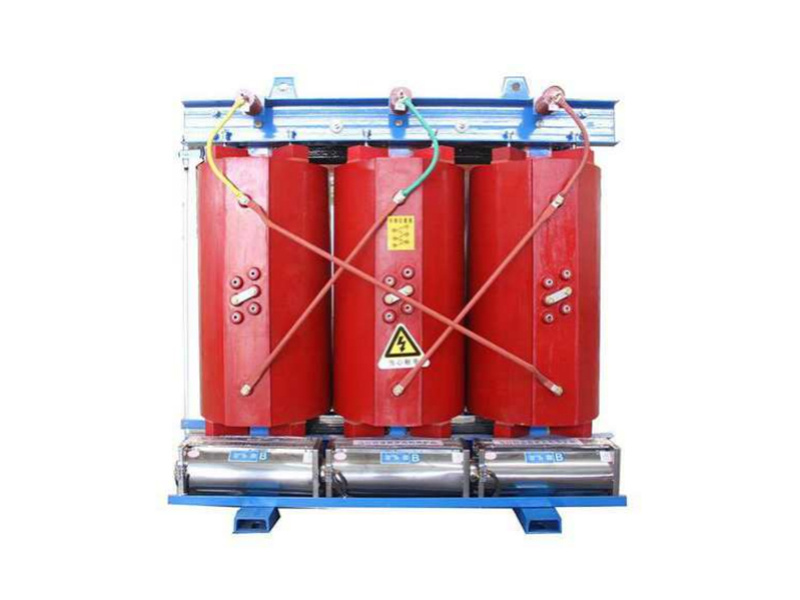He' Nan Chineng Electric Power Equipment Co., Ltd
Cast Resin Transformers vs. Traditional Transformers: A Comprehensive Comparative Analysis for Power Distribution
Nov 07,2025
Cast Resin Transformers vs. Traditional Transformers: A Comparative Analysis
In the realm of electrical engineering, transformers are pivotal components that facilitate the transmission and distribution of electrical energy. Among the various types of transformers, **cast resin transformers** and **traditional transformers** stand out due to their distinct construction methods, materials, and operational benefits. This article provides an extensive comparative analysis of **cast resin transformers** and **traditional transformers**, delving into their functionalities, advantages, disadvantages, and applications.
Table of Contents
- 1. Introduction to Transformers
- 2. What Are Cast Resin Transformers?
- 3. What Are Traditional Transformers?
- 4. Key Differences Between Cast Resin and Traditional Transformers
- 5. Benefits of Cast Resin Transformers
- 6. Disadvantages of Cast Resin Transformers
- 7. Benefits of Traditional Transformers
- 8. Disadvantages of Traditional Transformers
- 9. Applications of Cast Resin and Traditional Transformers
- 10. Conclusion
- 11. FAQs
1. Introduction to Transformers
Transformers are devices designed to change the voltage of alternating current (AC) in electrical circuits, ensuring efficient power distribution. They play an integral role in the electrical grid, converting high voltages for transmission over long distances and stepping down voltages for residential or commercial use.
Choosing the right type of transformer is critical, as it impacts efficiency, maintenance, safety, and overall operational costs. This article will scrutinize **cast resin transformers** and **traditional transformers** to provide a comprehensive understanding that aids stakeholders in making informed decisions.
2. What Are Cast Resin Transformers?
**Cast resin transformers**, also known as dry-type transformers, utilize a resin material for insulation and encapsulation. The winding conductors are enveloped in a resin-filled enclosure, providing robustness and safety in various operational environments. These transformers are typically designed for lower voltage applications and smaller capacities.
One of the defining features of cast resin transformers is their ability to operate in environments that may be unsuitable for traditional oil-insulated transformers, making them ideal for indoor installations or locations with stringent safety standards.
Construction and Design
The core and coil assembly of cast resin transformers is encapsulated in a thermosetting resin, offering superior insulation and protection against moisture, dust, and other environmental factors. This design not only enhances safety but also reduces the risk of fire hazards associated with oil-filled transformers.
3. What Are Traditional Transformers?
**Traditional transformers**, often referred to as liquid-filled transformers, utilize oil as both a coolant and an insulator. The oil serves to dissipate heat generated during operation, allowing for higher capacity and efficiency in transmitting electrical energy. These transformers are widely used in utility applications and large-scale power distribution networks.
Construction and Design
4. Key Differences Between Cast Resin and Traditional Transformers
Operational Efficiency
When it comes to operational efficiency, traditional transformers generally outperform cast resin transformers. The oil-filled design allows for better heat dissipation, enabling traditional transformers to handle larger loads without overheating.
Safety and Environmental Impact
Cast resin transformers score higher in safety standards due to their non-toxic, environmentally friendly materials. They pose a lower risk of fire and are not subject to oil leaks, making them more suitable for urban settings or where environmental regulations are stringent.
Maintenance Requirements
Maintenance for cast resin transformers is typically less demanding. They do not require regular oil testing or replacement, which can be a significant advantage in terms of long-term operational costs. In contrast, traditional transformers necessitate periodic maintenance to check for oil quality and leaks.
Initial and Operational Costs
Cast resin transformers generally have a higher initial purchase price than traditional transformers. However, the total cost of ownership may be lower due to reduced maintenance expenses and longer service life. Traditional transformers, while cheaper upfront, may incur additional costs associated with maintenance and potential failures due to oil-related issues.
5. Benefits of Cast Resin Transformers
1. Enhanced Safety
With no oil involved, cast resin transformers eliminate the risk of oil leaks and fires. This characteristic makes them particularly suitable for high-density urban areas and environments with stringent safety regulations.
2. Minimal Maintenance
Once installed, these transformers require minimal upkeep, reducing operational costs and downtime.
3. Environmentally Friendly
Being free from hazardous materials, cast resin transformers align with modern environmental standards, making them an eco-friendly choice for power distribution.
4. Versatility
These transformers can function efficiently in challenging environments, including high humidity and extreme temperatures.
6. Disadvantages of Cast Resin Transformers
1. Higher Initial Costs
The upfront costs of cast resin transformers are generally higher compared to their traditional counterparts, which could be a deterrent for some projects.
2. Limited Capacity
While ideal for small to medium applications, cast resin transformers may not be suitable for very high-capacity needs, where traditional design excels.
7. Benefits of Traditional Transformers
1. Cost-Effective for High Capacities
Traditional transformers provide a lower-cost solution for large-scale applications, making them the preferred choice for power utilities and industrial plants.
2. Proven Technology
Having been in use for decades, traditional transformers are a tried-and-true technology with extensive literature and support available.
8. Disadvantages of Traditional Transformers
1. Environmental Concerns
The reliance on oil raises significant environmental concerns, particularly regarding spills and contamination.
2. Maintenance Intensive
Traditional transformers require regular maintenance to ensure the integrity of the oil and to monitor for potential leaks.
9. Applications of Cast Resin and Traditional Transformers
Cast Resin Transformers Applications
Cast resin transformers are ideal for indoor operations, commercial buildings, and environmentally sensitive areas. They are frequently utilized in:
- Data centers
- Hospitals
- Shopping malls
- High-rise buildings
Traditional Transformers Applications
Traditional transformers are extensively used in utility applications, industrial settings, and areas where large volumes of power need to be transmitted and distributed. Common applications include:
- Power generation stations
- Substations
- Heavy industrial plants
- Renewable energy facilities
10. Conclusion
The choice between **cast resin transformers** and **traditional transformers** hinges on specific application needs and operational contexts. **Cast resin transformers** shine in safety, environmental impact, and maintenance, making them suitable for urban or environmentally sensitive areas. Conversely, **traditional transformers** excel in high-capacity applications and cost-effectiveness, particularly for utilities and industrial infrastructure.
Ultimately, understanding the intricacies of each transformer type allows stakeholders to make informed decisions that align with their operational goals, ensuring efficient and safe power distribution.
11. FAQs
1. What is the lifespan of cast resin transformers?
Cast resin transformers typically have a lifespan of 25 to 30 years, depending on operating conditions and maintenance practices.
2. Are cast resin transformers more expensive than traditional transformers?
Yes, cast resin transformers generally have higher initial costs compared to traditional transformers, but they may offer lower lifetime maintenance costs.
3. Can cast resin transformers be used outdoors?
While cast resin transformers can be used outdoors, they require appropriate enclosures to protect against environmental factors.
4. What are the most common uses for traditional transformers?
Traditional transformers are commonly used in power generation, industrial facilities, and large-scale power distribution networks.
5. Do cast resin transformers need regular maintenance?
Cast resin transformers require minimal maintenance compared to traditional transformers, with periodic inspections recommended to ensure optimal performance.
PREVIOUS:










